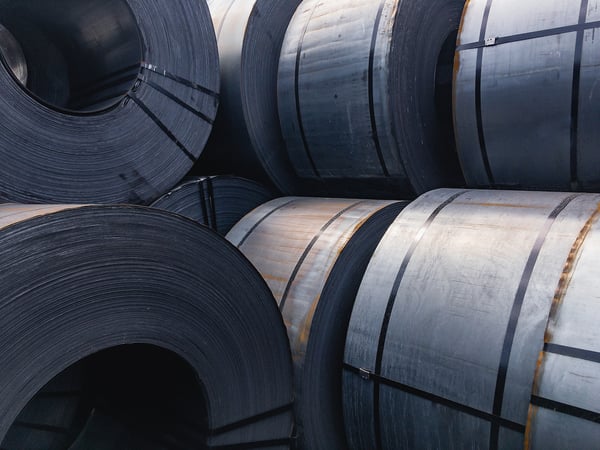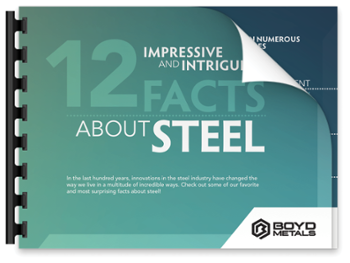What Does Cru Steel Index Stand for
Have you ever wondered how steel prices are determined? If you've ever given it any serious thought, you'll soon realize how complicated of a process it is. From calculating the cost of raw materials and transportation to analyzing supply and demand and global industry trends, establishing a benchmark to measure current and future prices against isn't exactly a walk in the park.
Thankfully in 1969 a group of industry professionals - ranging from financial analysts, economists, data scientists, and market researchers - decided to begin an independent commodity research company known as Commodities Research Unit (CRU). This group would go onto develop what is now known as "the CRU," saving us all in the metals industry a world of headache when it comes to establishing a benchmark to measure steel prices against.
What is CRU?
Though sometimes used interchangeably, the abbreviation "CRU" and "the CRU" mean different things.
As mentioned earlier, CRU stands for Commodies Research Unit. Though originally a copper research specialist, the CRU is now a globally-renown commodities research and price-reporting agency (PRA) that assesses a variety of different commodities through market research and analysis.
Through their research, the company provides global economic price assessments for the metals, mining, fertilizer industries by collecting and analyzing industry-specific data from across the globe.Their assessments most notably serve major mining, trading, manufacturing, construction and financial services companies worldwide.
What is the CRU Index?
"The CRU," more formally known as the CRU Index, is the most established and trusted price benchmark in North America for U.S. Midwest Domestic Hot-Rolled Coil Steel (HRC).
In technical terms, the CRU Index is a segmented stock market index that helps investors track steel performance by comparing current steel price levels with past prices to calculate future market performance.

In fact, the CRU index is used as a settlement price for the Chicago Mercantile Exchange's (CME) US Midwest domestic HRC futures and options contracts, and is referenced in over 95% of physical contracts for hot rolled coil in the U.S. market.
These contracts allow for prices to be managed separately from physical steel supply for the current year and following two calendar years, providing buyers and sellers a central point for price forecasting, discovery, transparency, and risk management.
Ultimately, the CRU index helps those across the entire steel supply chain, from global investors and analysts to mills and service centers, manage their businesses by having a trusted price benchmark to use when purchasing and selling steel.
How is the CRU Index calculated?
 Just like any other commodity, the price of steel is essentially determined by market supply and demand. In other words, it's about understanding how much steel is available versus how much is being bought on a large scale. Unfortunately, this type of information isn't the easiest to access, or analyze for that matter. That's where the CRU Index comes in.
Just like any other commodity, the price of steel is essentially determined by market supply and demand. In other words, it's about understanding how much steel is available versus how much is being bought on a large scale. Unfortunately, this type of information isn't the easiest to access, or analyze for that matter. That's where the CRU Index comes in.
To calculate the CRU Index, CRU partners with a mix of vetted steel mills, service centers, and manufacturers to collect transactional data on a weekly-basis through their CRU price collection platform (CPCP). The price is developed using only actual transactions on a Free On Board (FOB) mill-basis at a volume-weighted price.
Once collected, the data is reviewed and put through a rigorous process to create an up-to-date price assessment. The price comes out every Wednesday at 8 AM (CST) and reflects the business done in the Sunday to Saturday week before.
For the weekly CRU Midwest Hot Roll Coil assessment, the company only considers spot prices for U.S. made, prime, hot rolled coil measured per US ton.There are no bids, offers, or opinions taken into account when during the calculation.
Here is a breakdown of the CRU's price assessment process:
- CPCP Checks: The CPCP opens first thing on Friday and closes Monday at midnight (CST). As data comes in, a price analyst begins reviewing, spot checking, and investigating any potential errors or outliers.
- Initial Calculation: On Tuesday, the data is sent to the London headquarters where it is further reviewed and processed by senior data managers. The data is then used to create an initial calculation, which is then sent to a principal analyst for final assessment.
- Analyst Review: Once the analyst receives the initial calculation, they establish a range reflective of the current market - as prices are submitted, any prices in this range are automatically included.
- Verification & Final Calculation: Once all the prices are in and run through various spot checks, the principal analyst oversees the final calculation to include all prices representative of the market.
Steel Market Prices vs. Steel Product Prices

Unless you're an economist, market analyst, or day trader, chances are you won't be too concerned with monitoring larger scope market prices. In other words, while an economist may be studying the global price fluctuations of iron ore, a service center or manufacturer will be far more concerned with using market pricing to determine fair contract negotiations when sourcing steel from a mill.
As a buyer, it's important to remember while a correlation does exist between the larger scale market price and downstream steel material prices, the two will never be same. Just like the price of flour may influence the price of bread, it does not determine final cost - the same goes for hot-rolled steel coil. The farther down the value-added stream you go, the more factors (e.g. labor, energy, and transport costs) will influence the final price.
Interested in learning more about steel?

Download our free guide to discover some of our favorite facts! Inside you'll find surprising information covering:
- Iconic steel buildings
- Recent advances in the industry
- Steel's impressive strengths

What Does Cru Steel Index Stand for
Source: https://blog.boydmetals.com/understanding-the-cru-index-and-steel-prices#:~:text=As%20mentioned%20earlier%2C%20CRU%20stands%20for%20Commodies%20Research%20Unit.&text=Through%20their%20research%2C%20the%20company,data%20from%20across%20the%20globe.
0 Response to "What Does Cru Steel Index Stand for"
Post a Comment